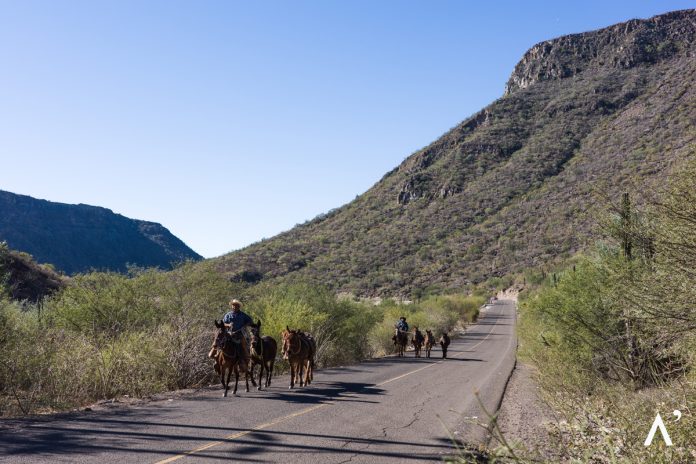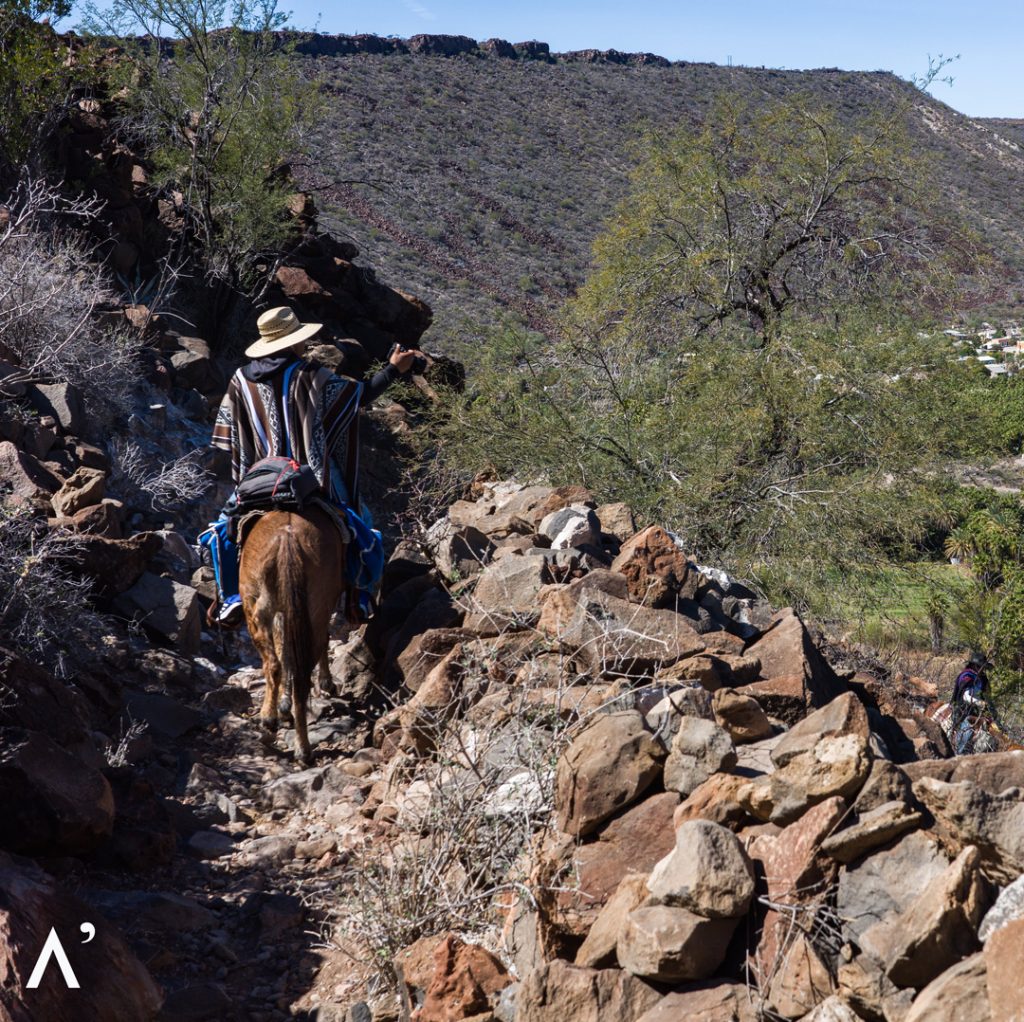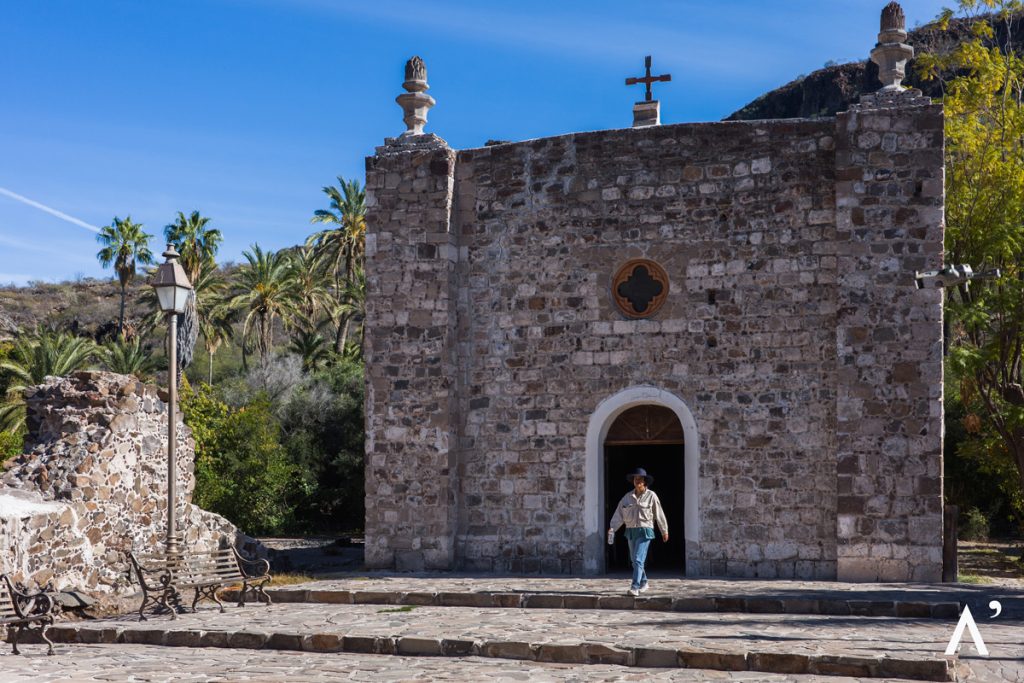Those trails where the barefoot native and Jesuit friars with rough sandals walked are precisely what is known as the Camino Real de California. Communication space was vital during the spiritual conquest, and today, these roads and trails lead to various remote areas where communities are preserved Sudcalifornianas.
Remote destinations are places both near and far away. The remote location preserves the possibility of the unknown; everything previously overlooked suddenly appears. It is not a space that is far away, but there is genuinely a contrast between everyday reality and that other travelling reality. These places are a hospice for those who yearn to experience an authentic and transformative moment while being true to their freedom.
San Francisco Javier is a picturesque oasis in the Sierra de la Giganta among palm trees on the banks of the creek. On December 3, this region holds one of the oldest “Southcalifornian” fairs (said to be 300 years old). There are other architectural elements such as the hydraulic canals and their basins; on the other hand, the cultivation of vines and olive trees. Something admirable in this place is undoubtedly the feeling of grandeur, where the desert is truly a paradise.
San José de Comundú is the only South Californian church with three naves; in fact, Jordan called this place the last paradise on earth, where not only the landscape is beautiful, but also the abundant production: sugar cane, olives, vines, palms and date palms. A journey through these distant spaces takes us back to immemorial times, which no one remembers since they are beyond history; however, they are present in the imagination and, above all, in mysticism.
Even if you don’t have an anthropological or expert knowledge of art or architecture, you can still notice the unique architectural features of these missionary buildings that will make your trip, videos and photographs more valuable. What are the architectural features that make these mission buildings so special?
The monastic temple: nave, usually with a vaulted roof. Cloister: on the right side of the temple, with two floors, with services: chapter house, kitchen, stables, dormitories, library, with a well fountain in the centre. Monumental atrium: in front of the temple, formed by a large esplanade, in the centre, there was usually a cross. Capillas pozas: so-called because the processions used to stop in front of them. They were small porticoes often built at the four corners of the atrium. Open chapel: known as “Indian chapel”, commonly located next to the monastic temple, which forms an independent construction or is integrated into the cloister.
A mistake would be to think that the church was the mission. The mission complex served as a religious centre and a vocational training centre; it was also an economic centre for trade and crop production from nearby lands, as well as for livestock and agriculture. The architectural splendour of the missions is a part of the romantic past, linked to song and poetry.
On the following tour, get ready to delve into the architectural wonders of the missions; talk to the people and listen to their anecdotes, perceive their country’s philosophy, their direct language; but, above all, their way of perceiving the world: you will indeed find something that you had not imagined, and that is the perfect food for the spirit.








